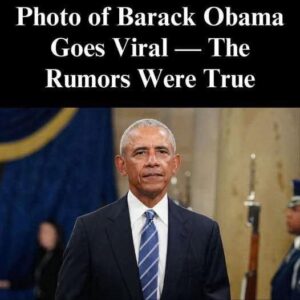Pope Leo XIV’s election has the entire Catholic world in a frenzy.
Pope Leo XIV became the first American to hold the position when the 69-year-old former Cardinal Robert Prevost was confirmed as the new head of the Catholic Church on May 8.
A mystic from Ireland
Some conspiracy theorists are worried about the Church’s future, while the majority of Catholics are celebrating the election of the new pope.
Why? Because Pope Leo XIV may be the last pope, according to an old prophecy that is resurfacing.
According to USA Today, Saint Malachy, an Irish mystic from the 12th century, is credited with uttering this doomsday prophecy, also referred to as the Prophecy of the Popes.
The prophecy stated that there would be 112 popes after Malachy’s lifetime, with “Peter the Roman” being the final one. Some conspiracy theorists are trying to connect this figure to Pope Leo XIV, but experts bring up a number of problems with this theory, pointing out that the prediction is flawed in many ways.
“Peter the Roman” is who?
First of all, Pope Leo XIV’s name and background don’t exactly fit with “Peter the Roman.” Not Italian, but Peruvian and American, Pope Leo XIV was once Robert Francis Prevost. Thus, the theory already appears to be incorrect.
Additionally, some have tried to connect the late Pope Francis to the enigmatic character “Peter the Roman” from St. Malachy’s prophecy, but that theory hasn’t worked.
Josh Canning, the director of the Newman Centre’s Chaplaincy in Toronto, rejected the notion as early as 2013, stating, “I don’t know how you can connect Peter the Roman with Pope Francis.”
The prophecy has also been swiftly rejected by other experts. The Prophecy of the Popes is a “forgery,” according to Boston College professor and Episcopal priest Fr. James Weiss. “The prophecies are a forgery,” he clarified. I don’t think they have any credibility.
Very true
Fr. Weiss also objects to the reference to a “dreadful judge” and the phrase “city of seven hills,” which most people believe to be a reference to Rome. He thinks this might allude to something far less catastrophic, perhaps a national leader’s judgment as opposed to a worldwide calamity.
Fr. James Weiss claims that the list ascribed to St. Malachy includes 112 mysterious phrases, each purportedly associated with a future pope, beginning with Celestine II, who assumed the papacy in 1143. Weiss clarified, “The popes are not specifically named,” adding that the mottos contain cryptic terms like “swift bear” and “rose of Umbria.”
Weiss went on to say that the phrases closely resemble the real popes from Malachy’s time until the late 1500s, when many academics think the list was actually written. But accuracy starts to fluctuate after that time. He remarked, “It’s hit or miss,” with some phrases barely resembling actual pontiffs and others being far more difficult to relate to.
Returning to the limelight
After Pope Francis passed away on April 21 at the age of 88, St. Malachy’s old prophecy gained renewed attention. Francis was thought by many to be the 112th pope on Malachy’s list, which means that no pope has been predicted for almost a thousand years.
The prophecy’s timing is one of the biggest red flags for many historians.
According to Joëlle Rollo-Koster, a professor of medieval history at the University of Rhode Island, there isn’t any conclusive proof that Malachy was involved in any prophetic writings. “As a historian who is meticulous about the evidence, that is the best evidence in my opinion that Malachy did not write or speak prophecies,” she stated.
Therefore, it appears that there is little to no connection between Pope Leo XIV and the Prophecy of the Popes, despite the fact that it may have captured the interest of some.
This new pope is definitely someone to keep an eye on, despite the conspiracy theories, but don’t expect the Prophecy of the Popes to play a significant role in deciding his future.





